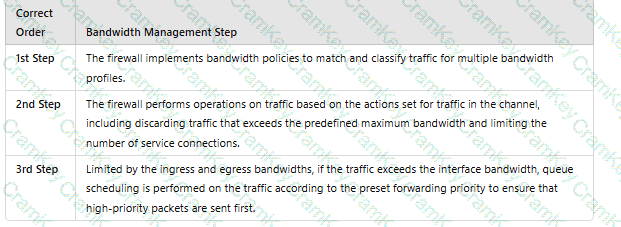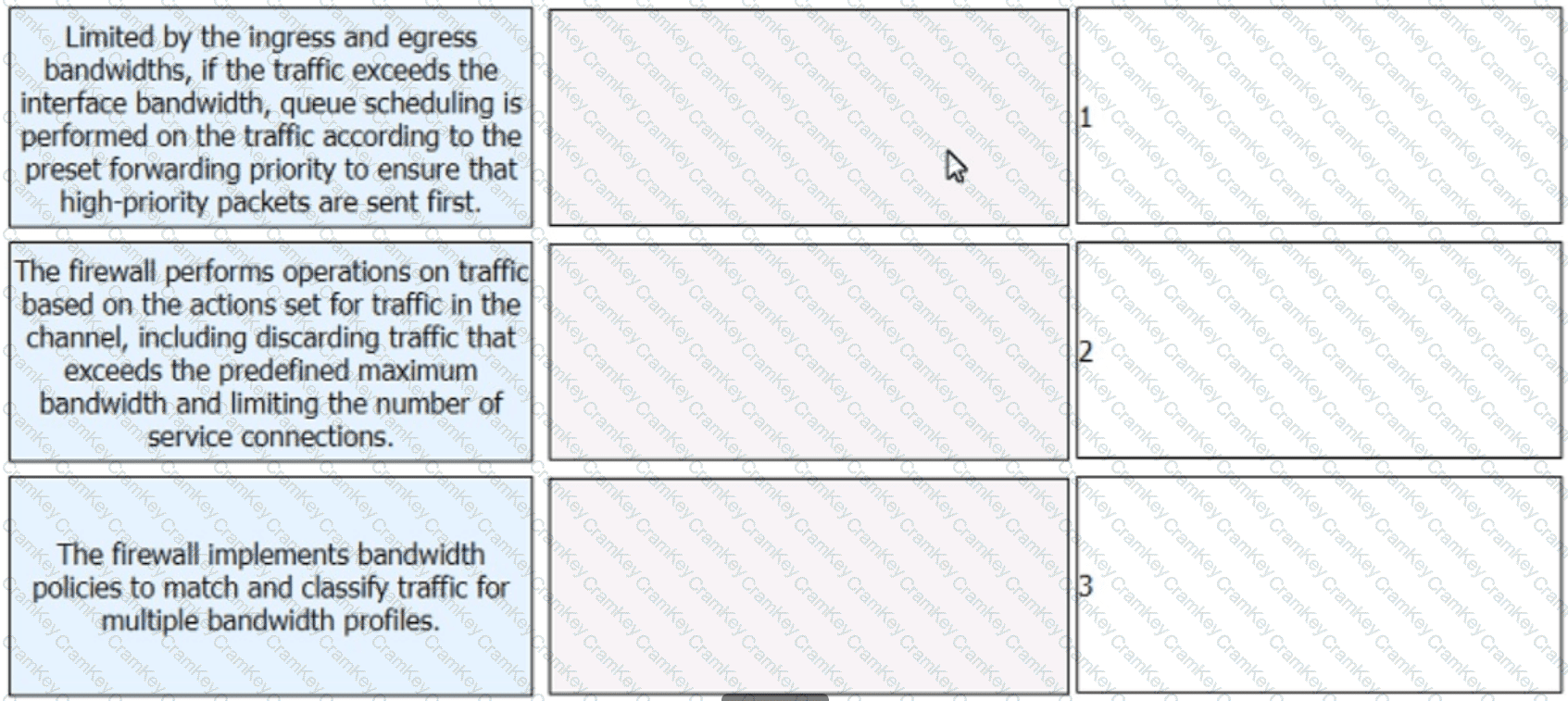 A screenshot of a computer screen
AI-generated content may be incorrect.
A screenshot of a computer screen
AI-generated content may be incorrect.
HCIP-Security References:
Huawei HCIP-Security Guide→ Bandwidth Management & Traffic Control Policies
Huawei QoS Configuration Guide→ Traffic Classification, Policing, and Queue Scheduling
1️⃣Step 1: Traffic Classification and Bandwidth Policy Matching
The firewallfirst classifies trafficusing predefined bandwidth policies.
These policies match traffic based on criteria such assource/destination IP, application type, and protocol.
This step ensures that each type of traffic is categorized correctly before applying bandwidth restrictions.
2️⃣Step 2: Traffic Processing Based on Bandwidth Policies
Once traffic is classified,the firewall enforces bandwidth limits and security actions:
Traffic exceeding the assigned bandwidth is discarded or throttled.
Service connection limits are enforced to prevent excessive connections per user or application.
3️⃣Step 3: Queue Scheduling and Priority Handling
If trafficexceeds the available bandwidth, the firewallprioritizes high-priority trafficusing queue scheduling mechanisms.
Techniques likeWeighted Fair Queuing (WFQ) and Priority Queuing (PQ)ensure thatcritical traffic (e.g., VoIP, business applications) is prioritized over less important traffic (e.g., downloads, streaming).
